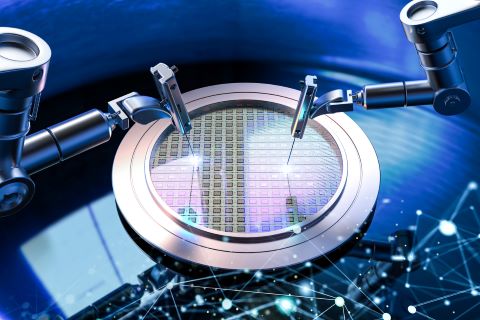2023/07/18
The National Project “Rapidus” Began to Produce Next-Generation Semiconductors; The Key to Success is Training for Technological Experts

On June 18, Yasutoshi Nishimura, Minister of Economy, Trade and Industry, visited Chitose City, Hokkaido, and inspected the planned construction site of the “Rapidus” factory, aiming to produce next-generation semiconductors domestically. The Japanese government has already decided to subsidize 330 billion yen for the construction of the new factory, but Naomichi Suzuki, Governor of Hokkaido, asked the government for additional support for infrastructure development, and Nishimura responded, “I will carefully consider this issue.”
Needless to say, semiconductors are strategically important from the perspective of strengthening industrial competitiveness and economic security. However, the Japanese semiconductor market, which once dominated the global market, now accounts for less than ten percent. The Japanese semiconductor industry is currently “10 to 20 years behind” other competitive countries.
In the midst of such a situation, the project of “Rapidus” started. “Rapidus” was established in August 2022, supported by investment from eight Japanese companies (Kioxia, Sony, Toyota, Denso, SoftBank, NEC, NTT, and MUFG Bank), and plans to set up a prototype production line in 2025 and massively produce 2-nanometer semiconductors by 2027. Since Japan can currently mass-produce 40-nanometer semiconductors, Rapidus is expected to become one of the world’s top producers. Rapidus said, “Japan has been leading the global market in the fields of manufacturing facilities and materials, and we can take advantage of this strength. Also, we are planning to acquire advanced technologies for mass production through partnerships with the Interuniversity Microelectronics Centre (IMEC) in Belgium and IBM in the US, the world’s leading semiconductor research institutions and companies.”
The challenge in this project will be funding. Investment of approximately 5 trillion yen will be needed for the technological development and establishment of production systems. However, the total investment amount of the above eight companies is 7.3 billion yen, so additional support from the government is necessary, which will still be not enough. The amount of annual capital investment of the Taiwan Semiconductor Manufacturing Company Limited (TSMC) in Taiwan, the largest semiconductor foundry that has already achieved mass production of 3-nanometer semiconductors, is 30 to 40 billion dollars. Also, it goes without saying that the semiconductor market is unstable. Moreover, it is obvious that the involvement of the government does not guarantee the success of a business, as seen in the cases of failure of Elpida Memory, Inc., Japan Display Inc. (JDI), and JOLED Inc. I wonder how far the government will take risks and whether it will be able to recover the national expenses invested in the project.
Rapidus said, “We cannot compete in the global market with the group of only Japanese domestic companies. The best way to success in the market is to work with major international players.” However, I wonder whether they will really be able to lead the project while relying on the government for funding and foreign companies for critical technologies. This April, GlobalFoundries Inc. filed a lawsuit against IBM, claiming the unlawful sharing of trade secrets to Rapidus. At the same time, economic security is of course not just a matter of Japan, and each country always prioritizes their own country when considering the economic interest.” It is still new to our memories that the US government excluded vehicles from Japanese, Korean, and European manufacturers, all of which are allies of the US, from the tax breaks for electric vehicles. All in all, the requirement for the success of the business is their own technological capabilities, and the key is the development of human resources who will be the future leaders in the market. Moreover, these roles should preferably be played by managers in the generations of Millennials or younger who have never encountered successful experiences. This is the shortest way to achieve success.
This Week’s Focus, June 23
Takashi Mizukoshi, the President